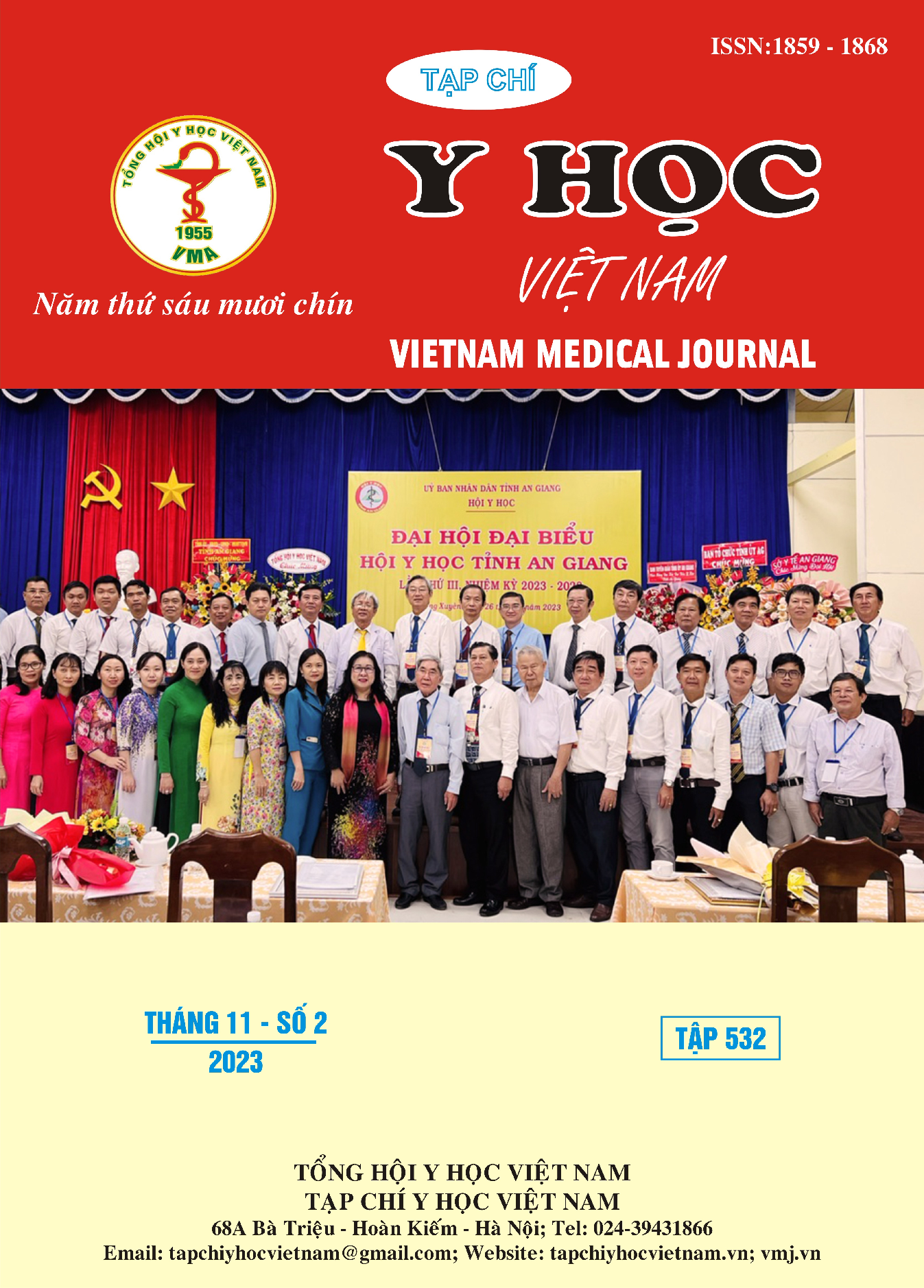THE EFFECTIVENESS OF THE INTERVENTION IN PRACTICING SCOLIOSIS PREVENTION KHMER ETHNIC GROUP IN SOME PROVINCES OF THE MEKONG DELTA REGION
Main Article Content
Abstract
Objectives: To evaluate the effectiveness of the intervention solution on the practice of scoliosis prevention among Khmer ethnic primary school students in certain provinces of the Mekong Delta region. Methods: The community intervention study with a control group design was conducted among all students in two intervention schools (453 students) and two control schools (497 students). The intervention lasted for 1.5 years, from February 2021 to May 2022. The intervention strategies included health education and communication efforts targeting both teachers and students, guidance on proper sitting postures for students in the classroom, regular scoliosis screening, and the improvement of classroom seating and lighting. Results: In the control school, the rate of practicing scoliosis prevention among students did not change significantly (from 37.3% to 38.2%, p>0.05). However, in the intervention school, the rate of practicing prevention before the intervention was 38.8%, and it increased to 67.8% after the intervention, with a statistically significant difference (p<0.05). The Difference in Differences (DiD) was 28.1% (p<0.05). Conclusions: The intervention activities have significantly improved the practice of scoliosis prevention among primary school students. This provides healthcare policymakers with scientific evidence to consider expanding the scoliosis prevention intervention program for students in a feasible and effective manner.
Article Details
Keywords
Intervention effectiveness, practice, scoliosis, primary school students.
References
2. Nguyễn Văn Lơ, Kim Thị Huy, Nguyễn Bá Phùng Hưng, et al. (2013) Nghiên cứu thực trạng vệ sinh học đường và bệnh, tật học đường tại các trường tiểu học của huyện Càng Long, tỉnh Trà Vinh năm 2012, Trung tâm Y tế dự phòng tỉnh Trà Vinh, 1 - 10.
3. Đào Thị Mùi (2009) Cong vẹo cột sống ở học sinh phổ thông Hà Nội: Thực trạng và giải pháp can thiệp, Luận án tiến sỹ y học, Chuyên ngành: Vệ sinh xã hội học và Tổ chức Y tế, Viện Vệ sinh Dịch tễ Trung ương, 175 tr.
4. Nguyễn Phương Sinh, Vũ Thị Tâm (2018) "Thực trạng cong vẹo cột sống ở trẻ từ 6 - 15 tuổi tại tỉnh Thái Nguyên". Tạp chí Khoa học và Công nghệ, 187 (11), 187 - 191.
5. Nguyễn Văn Tập, Nguyễn Thanh Bình, Nguyễn Văn Lành, et al. (2017) Đặc điểm dân số, văn hóa, xã hội và kinh tế của đồng bào Khmer, NXB Y học, Thành phố Hồ Chí Minh, 13-22.
6. Ngô Thanh Vũ, Quan Minh Nhựt (2022) "Các yếu tố ảnh hưởng đến sinh kế của người dân tộc Khmer Đồng Bằng Sông Cửu Long". Tạp chí Kinh tế và Quản trị Kinh doanh, Chuyên mục: Quản trị, quản lý (số 22), 56-67.
7. Miñana-Signes V., Monfort-Pañego M., Rosaleny-Maiques S. (2019) "Improvement of knowledge and postural habits after an educational intervention program in school students". Journal of Human Sport & Exercise, Volume 14 (Issue 1), 47-60.
8. Bettany-Saltikov J., Kandasamy G., Van Schaik P., et al. (2019) "School‐based education programmes for improving knowledge of back health, ergonomics and postural behaviour of school children aged 4-18: A systematic review". Campbell Systematic Reviews, 15 (1-2), 1-11.
9. Dugan J.E. (2018) "Teaching the body: A systematic review of posture interventions in primary schools". Educational Review, 70 (5), 643-661.
10. Tinning R. (2001) "Physical education and back health: negotiating instrumental aims andholistic bodywork practices". European Physical Education Review, 7 (2), 191-205.


